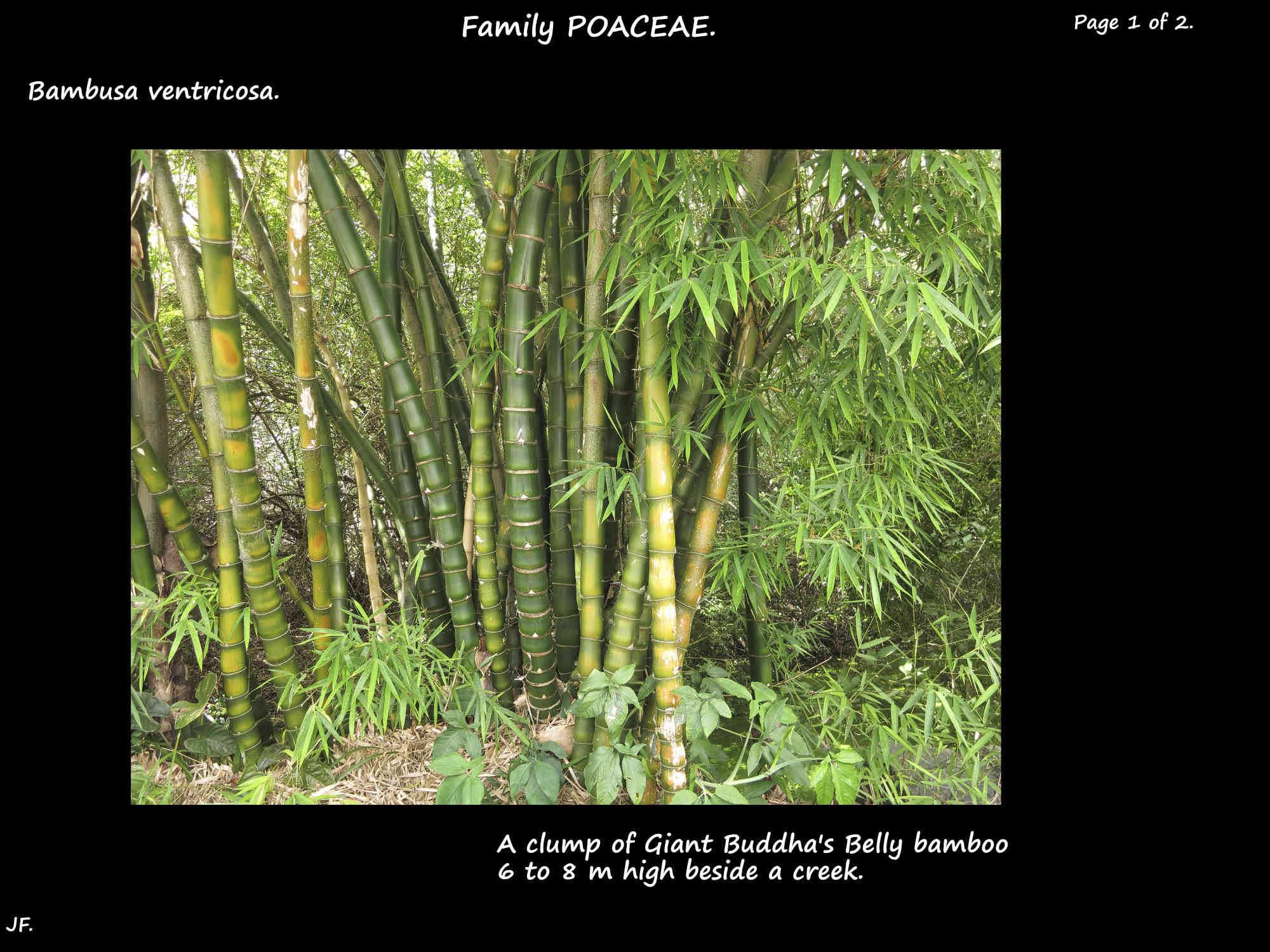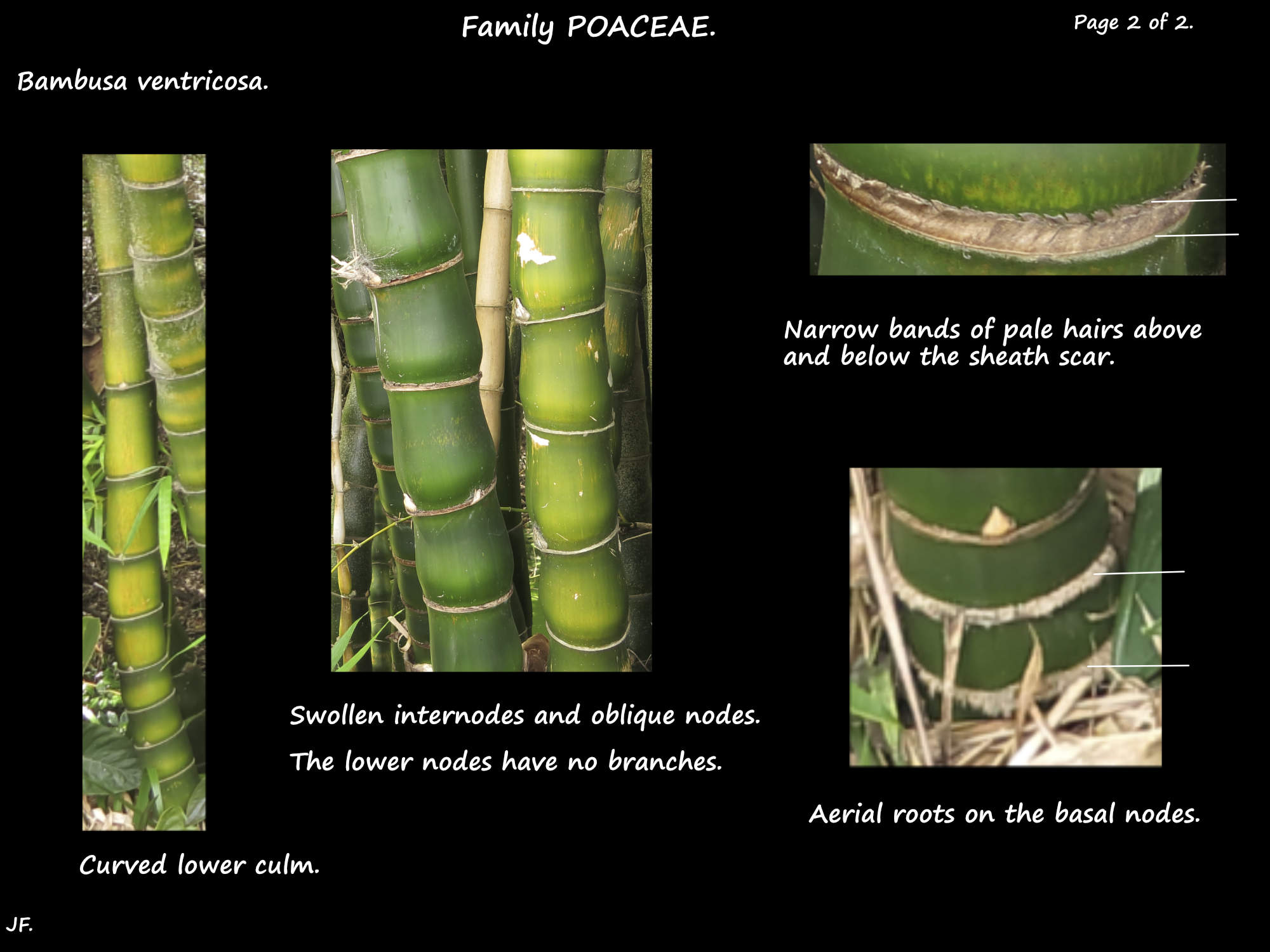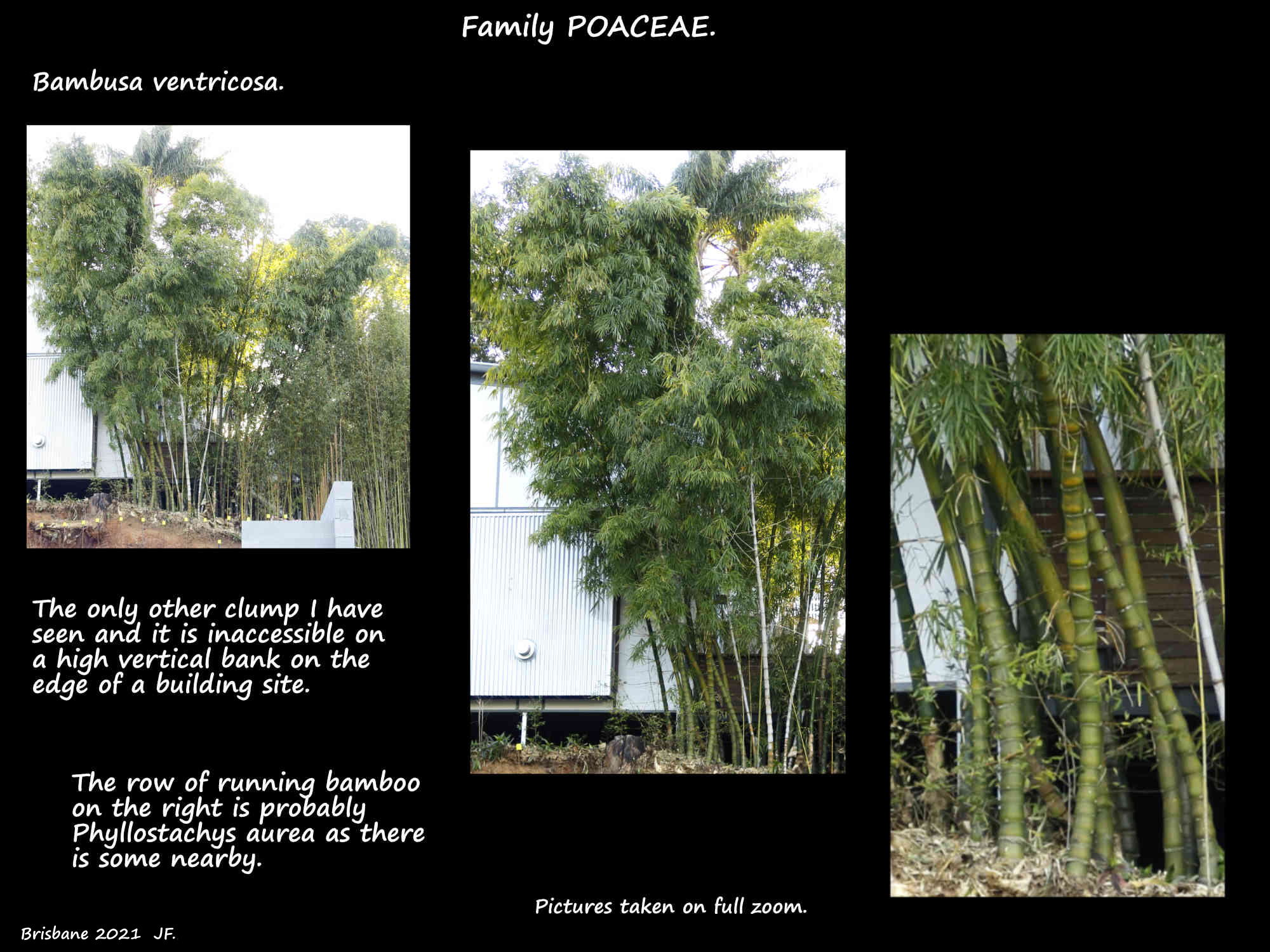Bambusa ventricosa.
Common or Giant Buddha’s Belly forms tight clumps with dense foliage in the canopy.
Culms are 5 to 10 m high with internodes around 30 cm long.
They are basically erect but the tops arch slightly.
The lower section can be curved or angled with shorter internodes and oblique nodes.
The internodes in the lower part have swollen bases.
The initially dark green culms become a yellowish-green or almost yellow.
The smooth internodes have no bloom and the basal few have aerial roots.
The lower culm sheath scars have a narrow band of pale hairs above and below them.
There are usually no side branches on the lower part of the culms making the swollen internodes visible.
Mid culm nodes have many side branches with 3 becoming slightly more dominant.
The ribbed culm sheaths are deciduous and have a small ligule and unequal auricles with setae.
Narrow lanceolate leaf blades are up to 18 cm long and only 2 cm wide with dense hairs underneath.
Leaf sheaths have a very short ligule and auricles with a few curved setae.
They flower but do not produce fruit.
The cultivar Bambusa ventricosa ‘Kimmei’.
Known as Yellow Buddha’s Belly bamboo it has yellow culms with green stripes.
Another Buddha’s Belly bamboo is the cultivar Bambusa vulgaris ‘Wamin’.
Only 3 to 5 m high the slightly arching culms have swollen internodes with no aerial roots.
Culms internodes are up to 10 cm long and 3 cm wide.
J.F.




